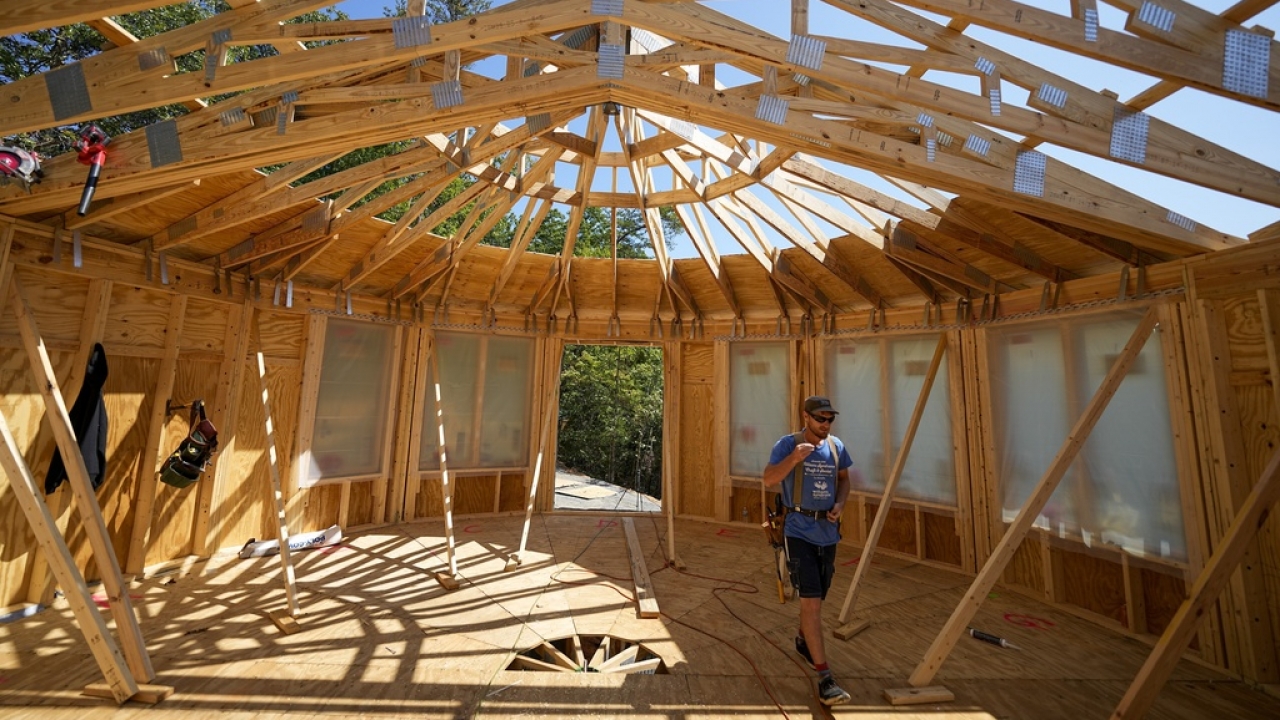Scientific breakthrough in fungal networks could change home building
A UK university is finding success in a project using mycelium to build lighter-weight structures with less negative environmental impact.

(AP Photo/Chris Carlson)
By Douglas Jones
Nov 6, 2023
Researchers say they have found great success in a study using fungal networks, also known as mycelia, to find ways to build structures with less negative environmental impact, and less reliance on concrete.
Scientists at Newcastle University in the UK say they have found a breakthrough in their work using the small connected strings that make up the fungal networks that are interwoven underground with tree roots.
The researchers have developed what they're calling mycocrete, which is described as a paste that is made with the root network of fungus. They say they have been able to use this mycelium as a building material by injecting it into a knitted textile framework to create a composite material said to be stronger and more versatile than previously used biomaterials.
Nov 6, 2023
Researchers say they have found great success in a study using fungal networks, also known as mycelia, to find ways to build structures with less negative environmental impact, and less reliance on concrete.
Scientists at Newcastle University in the UK say they have found a breakthrough in their work using the small connected strings that make up the fungal networks that are interwoven underground with tree roots.
The researchers have developed what they're calling mycocrete, which is described as a paste that is made with the root network of fungus. They say they have been able to use this mycelium as a building material by injecting it into a knitted textile framework to create a composite material said to be stronger and more versatile than previously used biomaterials.
The researchers say the mycocrete will be a great improvement structurally when dried. Jane Scott of Newcastle University said, "Our ambition is to transform the look, feel and well-being of architectural spaces using mycelium in combination with bio-based materials such as wool, sawdust, and cellulose."
The scientists, in their research, mixed mycelium spores with other materials the spores could consume and be able to grow off of, like grains. The mixture was then placed into a warm, dark, and humid space while the mycelium grew and was then dried.
This process creates a building material that researchers say is a more natural replacement for foam, plastic or timber.
Scott says what is created is a "lightweight, flexible, and formable" material.
"The major advantage of knitting technology compared to other textile processes is the ability to knit 3D structures and forms with no seams and no waste," Scott said.
Researchers put their dried and natural building material through strength and tension tests. They also tested how it would withstand compression and flexion.
Scott said, "The mechanical performance of the mycocrete used in combination with permanent knitted formwork is a significant result, and a step towards the use of mycelium and textile biohybrids within construction."
The researchers say the new "biofabricated" building material could require new machine technology in order to move these types of textiles into use in everyday construction.
The scientists, in their research, mixed mycelium spores with other materials the spores could consume and be able to grow off of, like grains. The mixture was then placed into a warm, dark, and humid space while the mycelium grew and was then dried.
This process creates a building material that researchers say is a more natural replacement for foam, plastic or timber.
Scott says what is created is a "lightweight, flexible, and formable" material.
"The major advantage of knitting technology compared to other textile processes is the ability to knit 3D structures and forms with no seams and no waste," Scott said.
Researchers put their dried and natural building material through strength and tension tests. They also tested how it would withstand compression and flexion.
Scott said, "The mechanical performance of the mycocrete used in combination with permanent knitted formwork is a significant result, and a step towards the use of mycelium and textile biohybrids within construction."
The researchers say the new "biofabricated" building material could require new machine technology in order to move these types of textiles into use in everyday construction.
No comments:
Post a Comment